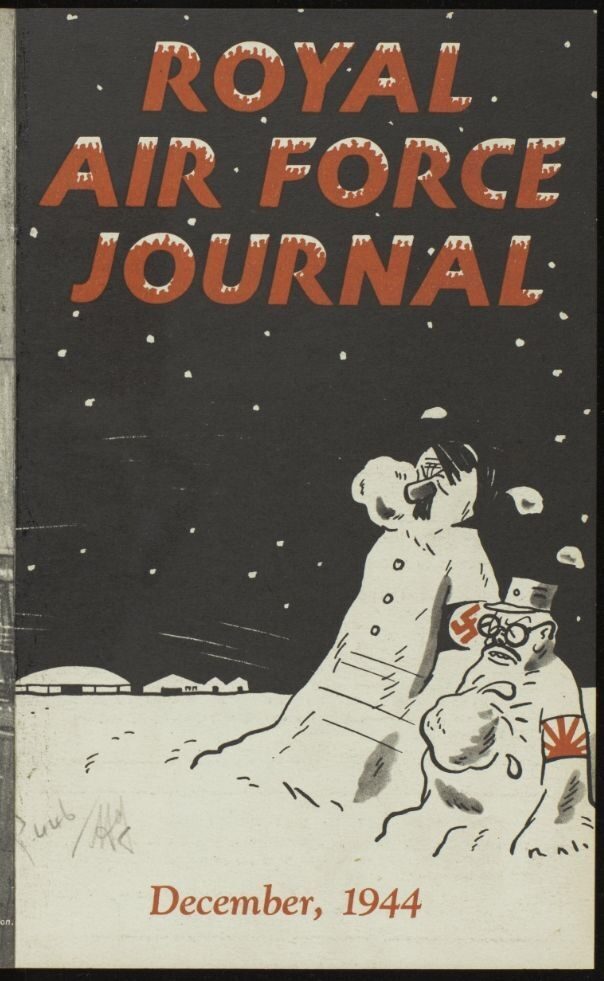A ghost story for Christmas
Telling ghost stories is now a pastime most commonly associated with Halloween but surprisingly it was once a time-honoured Christmas tradition, with friends and families gathering by the light of an open fire on Christmas Eve to entertain each other with spooky tales.
The custom goes back to at least the early seventeenth century with the practice of telling Winter stories or Winter tales. The peak of its popularity however was undoubtedly during the Victorian era, which witnessed the publication of the most famous Christmas ghost story of them all, Charles Dickens’ A Christmas Carol (1843), whose protagonist the elderly miser Ebenezer Scrooge was visited by the ghost of his former business partner Jacob Marley followed by three spirits.

Image from Eighth Army News, 25 December 1944. © Material sourced from Imperial War Museums. Further reproduction is prohibited without permission.
Later writers would continue the tradition of ghost stories at Christmas into the early twentieth century. The most well-known of these was the medievalist scholar M.R. James, who whilst a fellow at King’s College, Cambridge, would often tell spine-chilling stories to his students and colleagues on the night before Christmas. These stories were later published in a series of books beginning with Ghost Stories of an Antiquary (1904).
However, the rise in popularity of Halloween as a celebration during the twentieth century led to the gradual decline of the practice of telling ghost stories at Christmas time. This has caused people to be now rather puzzled by the lyrics to the classic Christmas song It's The Most Wonderful Time Of The Year, which includes the words:
There'll be parties for hosting, marshmallows for toasting and carolling out in the snow! There'll be scary ghost stories and tales of the glories of Christmases long, long ago.
Yet a search of AM’s Service Newspapers of World War Two, which includes an extensive range of wartime publications produced for serving soldiers, suggests that the tradition of telling ghost stories at Christmas was still very much alive in the 1940s.
The December editions of many of the forces’ newspapers contain ghost stories to entertain the troops during the festive season and indeed these were considered to be an essential component of the celebrations.
No. 53 of the 229 Times issued on Christmas Day 1944, for example, asserted that ‘A ghost story is always topical at Christmas and every paper should have a least one in its Christmas issue.’
The December 1944 edition of Touchstone, agreed that ‘Any self-respecting Christmas number should have a ghost story.’
At the same time, The Clarion, produced by allied POWS in Stalag VIIIb, went even further, suggesting that ‘Christmas, more than any other season, is popularly regarded as a proper time to tell ghost stories, and to argue on the subject of their existence.’
Perhaps the strongest evidence though comes in the form of the Christmas Edition of Eighth Army News, published on 25 December 1944, which boldly asserted that ‘You can’t have Christmas without a GHOST story!’

Image from Eighth Army News, 25 December 1944. © Material sourced from Imperial War Museums. Further reproduction is prohibited without permission.
So in the true spirit of Christmas, I present ‘The Mirror in Room 22’, from Royal Air Force Journal, December 1944, a terrifying tale set in an RAF officers’ mess on the night of Christmas Eve. Turn to page 428 - if you dare!

Royal Air Force Journal, December 1944. © Material sourced from Imperial War Museums. Further reproduction is prohibited without permission.
About the collection
Service Newspapers of World War Two is out now.
Recent posts

The blog highlights American Committee on Africa, module II's rich documentation of anti-apartheid activism, focusing on the National Peace Accord, global solidarity, and student-led divestment campaigns. It explores the pivotal role of universities, protests, and public education in pressuring institutions to divest from apartheid, shaping global attitudes toward social justice and reform.

This blog examines how primary sources can be used to trace the impact of young voices on society, particularly during pivotal voting reforms in the UK and the US. Explore materials that reveal insights into youth activism, intergenerational gaps, and societal perceptions, highlighting their interdisciplinary value for studying youth culture, activism, and girlhood across history.
